By Andrew Ragas
In the year 1981, the British rock group, The Clash, wrote the number one single, “Should I Stay or Should I Go.” My trip partner for this adventure, Johnny Amato, and I kept singing the same question in early to mid summer 2014. Should I stay or should I go?
Most of the North Country had a winter that wouldn’t end and left us wondering when ice-out would take place in 2014. The heavy spring rainfall and snowmelt that followed left Northwest Ontario anglers wondering whether or not Noah’s ark needed to be built in order to successfully fish many of the Province’s flooded waters this season. After multiple trip cancellations, and a summer defined by high water levels, the arks weren’t needed to fish and access its boat-in resorts. By mid summer, relief and receding water levels finally came.
During the middle of August, we both sang to The Clash for one last time. The decision had been made. We traveled to Rainy Lake to fish at Camp Narrows Lodge located in Northwest Ontario.
The Lake
At a quarter million acres in size, Rainy Lake is one of Northwest Ontario’s and Northern Minnesota’s most famous fisheries. Straddling the border between the United States and Canada, the landscape surrounding Rainy Lake offers breathtaking scenery with unbelievable multi-species fishing.
When I think of Rainy Lake, the first thing that comes to mind is multi-species angling opportunities…. not just for different fish species, but big ones and many too! Then I make comparisons to how I view Rainy as the little brother to Lake of the Woods, which is where I’ve fished annually these past few seasons. Minus all the muskies and half the angling pressure it receives in comparison to Lake of the Woods, Rainy Lake fishes eerily similar with its gorgeous rock structures and island formations, and endless protected bays and coves. Reflecting upon my time spent in Wisconsin’s Northwoods and elsewhere, I hate to admit that I’ve been fishing little ponds my whole life. On any Canadian trip, I return home a changed man, and a better angler for breaking down a mass volume of water I’ve never been on before.
The Trip
What was originally scheduled for the last week of June finally took place during the week of August 24-30, 2014. Amato and I left from our home fishing grounds of northern Wisconsin and drove six hours through north central Minnesota where we reached our Fort Frances, Ontario destination.
Owned and operated by Tom Pearson (49) for the last 29 seasons, Camp Narrows Lodge offers anglers and hunters the opportunity to experience a unique wilderness fishing adventure at a boat-in resort. As a drive-to destination, fishing at Camp Narrows Lodge for the week is an affordable trip in comparison to most premier Canadian fishing getaways and outpost camps. Popular with the majority of his guests, Pearson offers cabin rentals with basic housekeeping plans (bringing your own boat and food for the week) at an affordable $565 per week (gas and taxes included), per person. Other plans such as fully catered American Plans and corporate packages to meet everyone’s needs are available upon request as well.
All facilities at Camp Narrows are fully modernized and offer a panoramic view of Northwest Bay. Anglers will find the ultimate in relaxation in its clean cabins and comfortable furnishings. The carpeted floors, electric lights, and hot and cold running water makes its cabins feel like the perfect home away from home. With eight cabins on site, Pearson is able to accommodate small groups of two all the way up to a party of forty. Every cottage comes equipped with a gas stove, electric refrigerator, utensils, dishes, and all linens. For your added convenience all cabins also have showers and flush toilets.
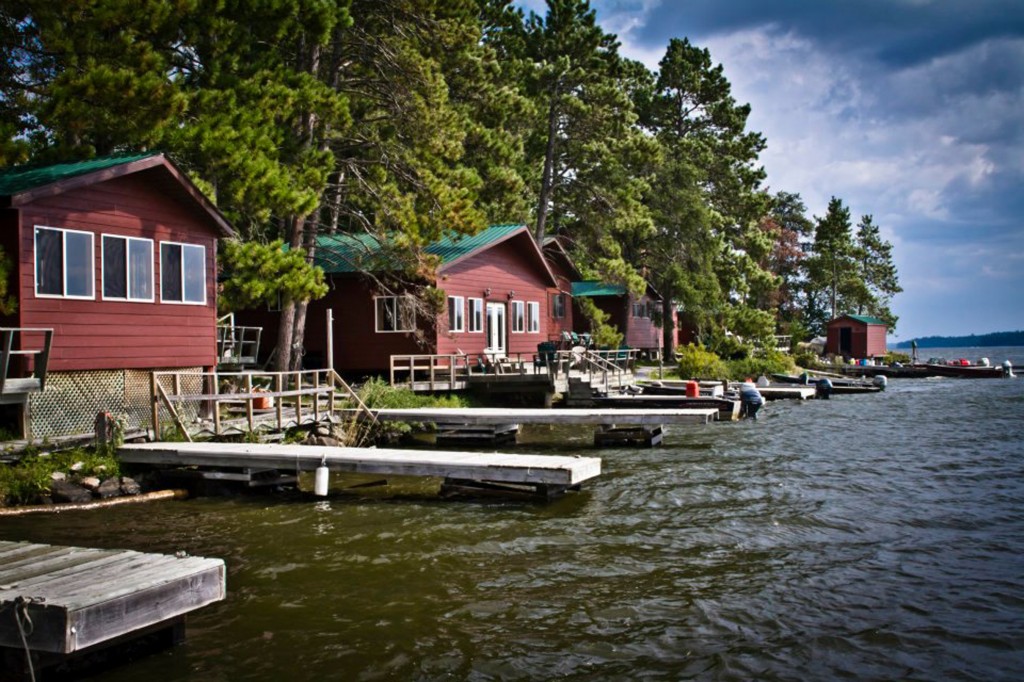
At Camp Narrows Lodge from May through October, anglers get to enjoy the unbeatable combination of first-rate accommodations and excellent multi-species angling headlined by smallmouth bass, walleye, northern pike, and crappie. Strategically situated on Northwest Bay, directly in the middle of the north arm of Rainy Lake, the waters surrounding Camp Narrows is world famous for its bass fishing and a favorite of many famous anglers and outdoor publications. The catch and release policy instituted by Pearson ensures that Rainy Lake’s north arm will continue to rear its strong smallmouth bass fishery into the future.
The remote location of Camp Narrows lodge provides serious anglers and outdoorsmen with a convenient location, and a world of endless water with many sought-after gamefish species. To get there travel from Duluth, MN, along highway 53 through North Central Minnesota to International Falls. Cross the Rainy River into the Fort Frances Port of Entry. Have your US Passports in hand, with hats off, and a smile on your face and making eye-contact with the border agents. When granted access into Sunset Country, take highway 11 to Devlin (approx. 14 miles) and then turn north on highway 613. Drive for 14 miles to the public landing located at La Belle’s Birch Point Camp. Launch the boat into west bay, park your vehicle on the mainland for the week at no charge as a guest of Camp Narrows Lodge, and transport yourselves across seven miles of water to the lodge for your entire week’s trip.
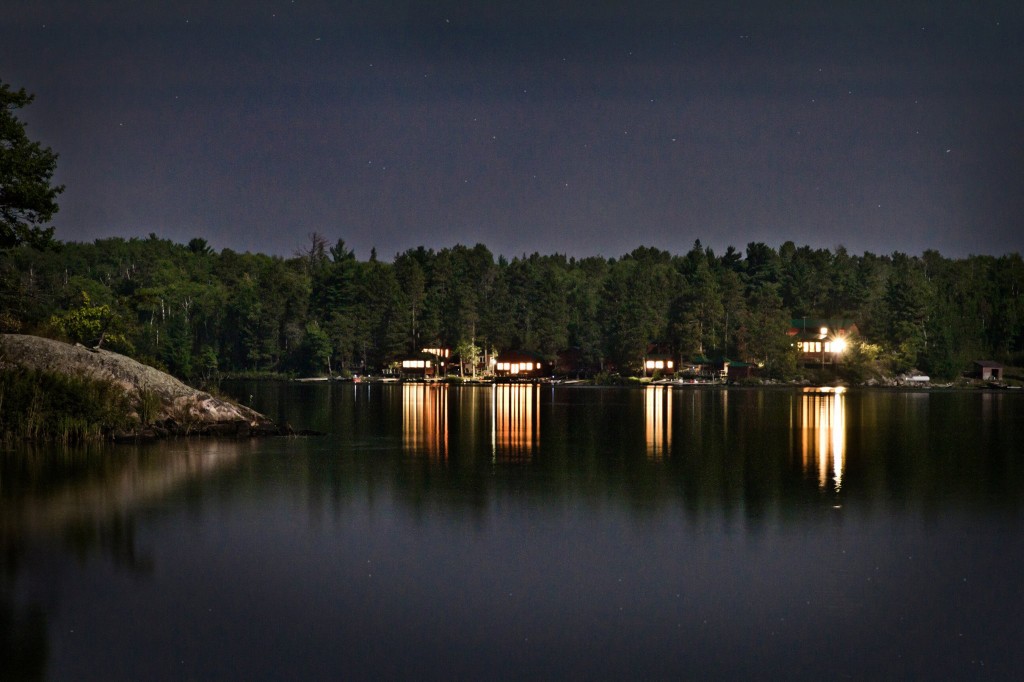
The Fishing
Because Rainy Lake is a mecca for multi-species angling and all of its major fish species can be had in every section and basin of the lake, the question of what to fish for doesn’t apply here. Walleyes, northern pike, smallmouth bass, and crappie can be caught from anywhere at any time, and often times by accident when targeting a single species. Because Amato and I are dedicated bass anglers, this trip was concentrated mostly on bass fishing and all other species were secondary.
Due to Camp Narrows centralized location, most of our favorite fishing areas were located within 5 to 10 miles away from camp. Because of Northwest Bay’s abundant walleye population and trophy smallmouth bass component, Camp Narrows visitors tend to fish the nearby bays and basins of Northwest Bay, Lyons Bay, Halfway Inlet, Shelter Islands, Browns Inlet, and Turkey Island basin. Meanwhile, the explorers and aggressive anglers like ourselves may elect to take longer runs and go farther north or east into the lake’s more remote locations such as Alexandria and Ash Bays, Manitou Sound, and clustered regions of main lake islands.
Throughout our week’s stay, Amato and I elected to use a camp boat rather than trailer up my antiquated Lund boat. Pearson offers his guests tiller rentals, 2014 model year G3 aluminum deep-V’s (Guide V177 T). At 17 ½ feet, his rentals are equipped with powerful, fuel efficient 50 hp Yamaha Four Stroke outboards and rigged with Lowrance HDS electronics and 55 lb thrust Minn Kota Edge bow-mount trolling motors. Our boat was more than plenty and luxurious not only for safe navigation, but modern and sophisticated, allowing us to accomplish our task of catching multi-species delight.
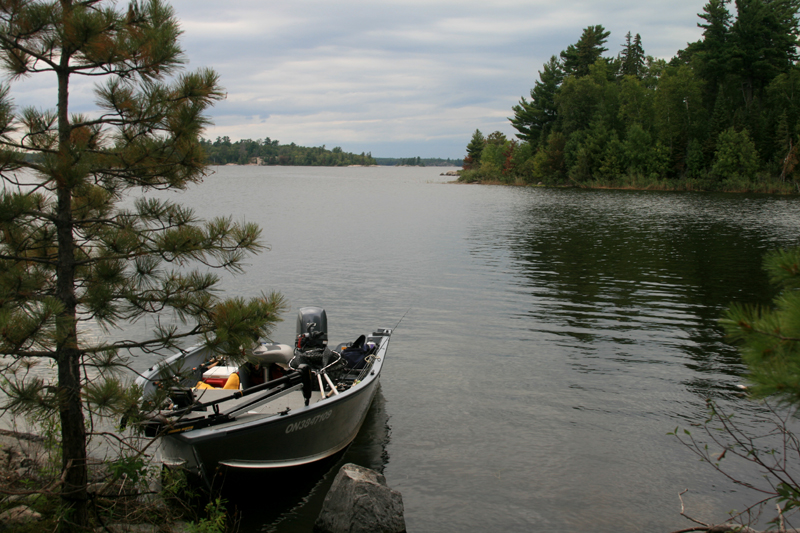
Like my trips to nearby Lake of the Woods these past few seasons, which fishes similarly to Rainy, my experience of navigating and mapping big water played a key role in our break-down of Rainy Lake and successfully fishing its basins. Because several creeks, rivers, and other nearby lakes drain into it, Rainy Lake functions more like the lowland flowages and reservoirs I fish often in North Central Wisconsin. Due to this characteristic, water clarity is brown, quality fishing spots are abundant with plentiful habitat, and the entire fishery is fertile. With the abundance of spots, it was important for me to devise our daily milk-runs to maximize the number of spots we’d fish and minimize the amount of time spent endlessly motoring around the lake. For first time visitors, the lake may be large and intimidating. You need to have a strategic game plan each day. It makes learning new, big water so much easier.
With big smallmouth bass as our primary agenda, Amato and I found zero shortage of quality spots. The structure of the north arm of Rainy Lake is ideal for smallmouths, comprised mostly of solid rock shorelines and hundreds of islands with large boulders and reefs extending from them. Another unique habitat utilized by Rainy Lake’s bass is isolated cabbage beds, weedlines, and dense patches of bulrushes. Due to the lake’s walleye resurgence in the last decade, resulting from the crash of its smelt population and implementation of a 13 ¾ – 17 ¾ inch slot in which everything between 18 to 26 must be released, many anglers, including Pearson, believe the walleye’s abundance on rock and deep open water structure has forced populations of the lake’s smallmouths into these areas making them weed and vegetation-oriented fish. This unique displacement is common on many of my Wisconsin flowages, so it didn’t surprise me. Whether we were fishing for deep and shallow rock or weed oriented bass, patterns for both habitat areas were found.
Due to the prevalence of snags, soft plastics and bottom-hugging baits were simply out of the question unless we knew where the sand bars and beach shorelines were at. This was best evidenced by Amato’s morning performance of donating 12 tube jigs to the vicious rocks of Rainy Lake. With that being said, and our milk-run strategy for covering acres of water and as many as 30 to 40 spots per day, spinnerbaits, crankbaits, topwaters, jerkbaits, and paddletail swimbaits outfished everything else by a wide margin.
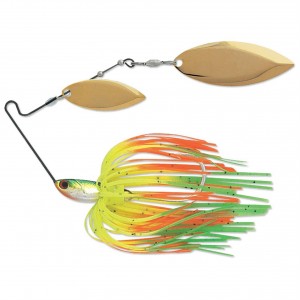
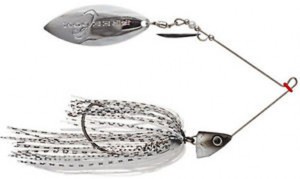
Terminator T2 Spinnerbait (1/2 oz firetiger) and Freedom Tackle Corp. Spinnerbait (3/8 oz silver shad)
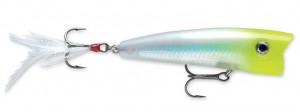
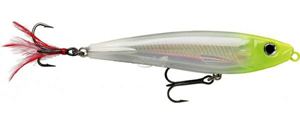
Rapala X-Rap Pop (size 7 lemonhead) and Rapala X-Rap Walk (size 13 lemonhead)…… get the pattern by now?
During the summer months, Rainy Lake smallmouths are found occupying many areas of the lake. Regardless of its depleting smelt forage, some bass school together and still chase this protein-rich pelagic baitfish (along with immature whitefish) throughout the deep open water basins of the lake. This scenario makes vertical jigging with soft plastic flukes such as GNUGEN Tackle’s 4 inch Live Minnow and Stankx Bait Company’s Flukez a deadly option, as are Spoons and Jigging Rapalas. Meanwhile, other fish can be solely found along rocky shorelines and wherever bottom transitions from rock to vegetation occurs. In these areas, spinnerbaits, suspending jerkbaits such as Dynamic Lures J Spec and Travados and Rapala X-Raps, craw imitating crankbaits, lipless crankbaits, and suspending jerkbaits shine. Lastly, wherever there is a presence of weeds, the displaced smallmouths occupy these areas in their pods of feeding wolfpacks, and can be taken with an assortment of baits with our favorites having been 3/8 oz and ½ oz Terminator T1 and T2 spinnerbaits with gold blades and chartreuse, firetiger skirts.
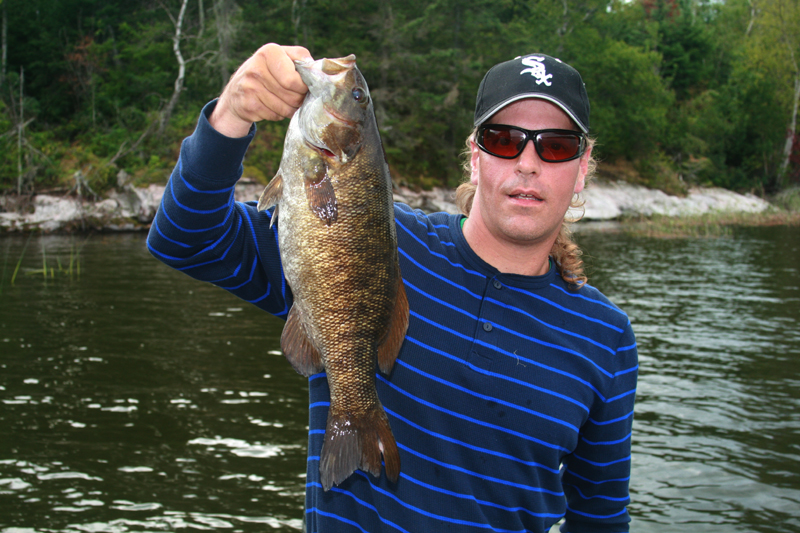
Depending upon the day’s weather and conditions, special techniques and unique situations often play out with Rainy Lake’s smallmouths. Our most favorite of this trip was the ferocious and vicious topwater bites during evenings. When conditions were right for bass to pounce on Rapala’s X-Rap Pop and X-Rap Walk surface baits over rocky shoals and along the edges of cabbage beds, we hammered them. On these topwater bites, we focused on working through our high-percentage spots where smallmouths were previously contacted, keeping time management in check.
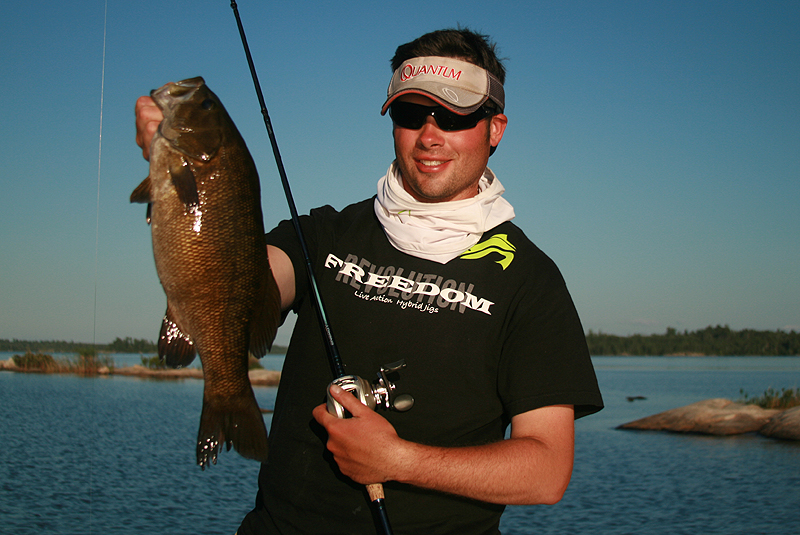
Another unique scenario was actually an observation: Whenever one smallmouth bass is contacted on Rainy Lake, there is high probability that more fish are utilizing the same spot for the same feeding purposes. It was important for us to camp on spots when contact was made with the first fish, because others within the same unit were caught thereafter. This was best exemplified on the isolated bulrush and cabbage beds Amato and I fished. Usually the first fish from these spots were caught with oversized spinnerbaits, and then the remaining conditioned fish were extracted with topwaters or ribbed paddletail swimbaits rigged on a swimming jig. At 3.5 inches and rigged with an 1/8 oz Northland Mimic Minnow head, the all new 3.5 inch Damzel by Stankx Bait Company cleaned house on these weed oriented fish when ripped and swam through vegetation with a medium retrieve.
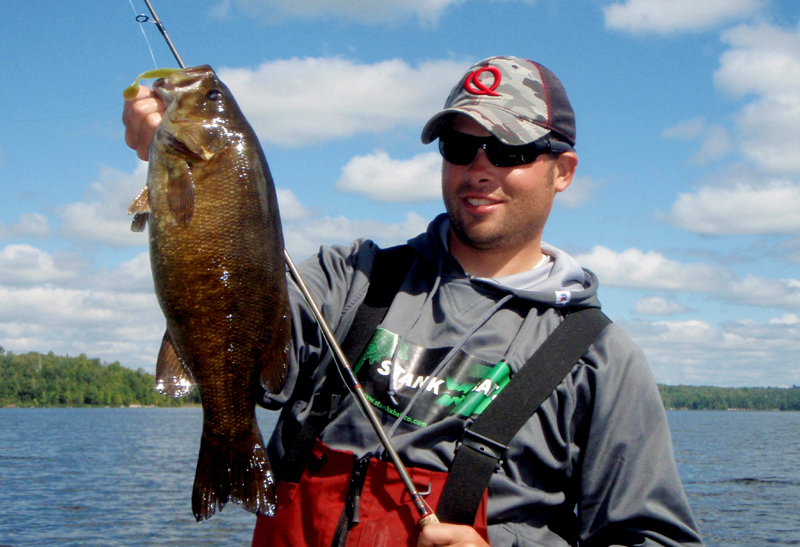
Although Amato and I didn’t locate any smallmouth bass larger than 19.5 inches and couldn’t find the holy grail of 20 inchers Rainy Lake is well known for, we ended up catching more than 100 combined bass with several between the ranges of 17 to 19 inches. Due to the lake’s high fertility, abundant forage options, and fish’s fat flowage build, many of these Rainy Lake smallmouths weigh in at 4 and 4.5 pounds. Factoring the post-flood conditions we were dealt, our locating of many displaced fish, and the dog days of summer in which there were only a few short feeding windows per day, we were pleased by these efforts and are anxious for a second crack next season.
Our focus throughout the week was on smallmouth bass but there were daily occurrences when we had to turn to other species; most notably walleyes and northern pike. Rainy Lake’s walleye fishery is one of the best in all of Canada for both numbers and trophies. Within minutes away from Camp Narrows, walleye anglers can catch fish off the many plentiful rock humps by vertical jigging and livebait rigging methods. And when presented with the right conditions, single line trolling with deep diving crankbaits and spinner rigs along rock walls, mud flats and weedlines will produce larger fish. Additionally, casting windblown rock points with crankbaits and minnow plugs will catch plenty of action, too.
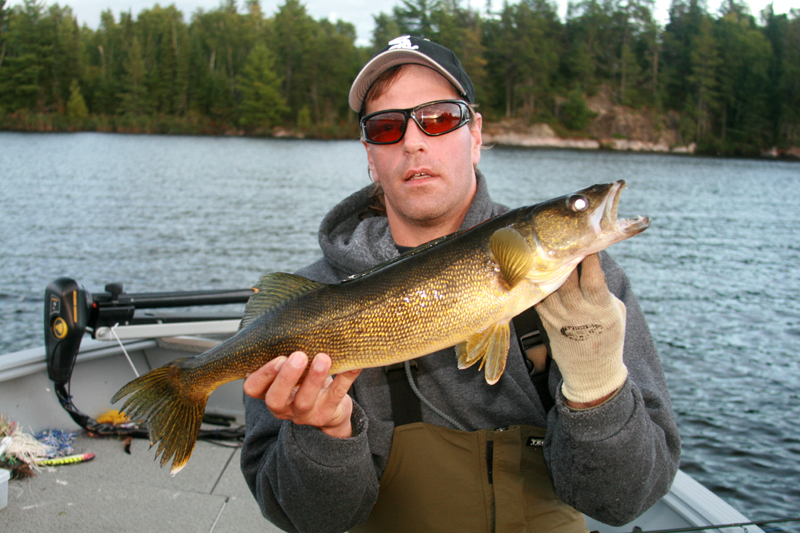
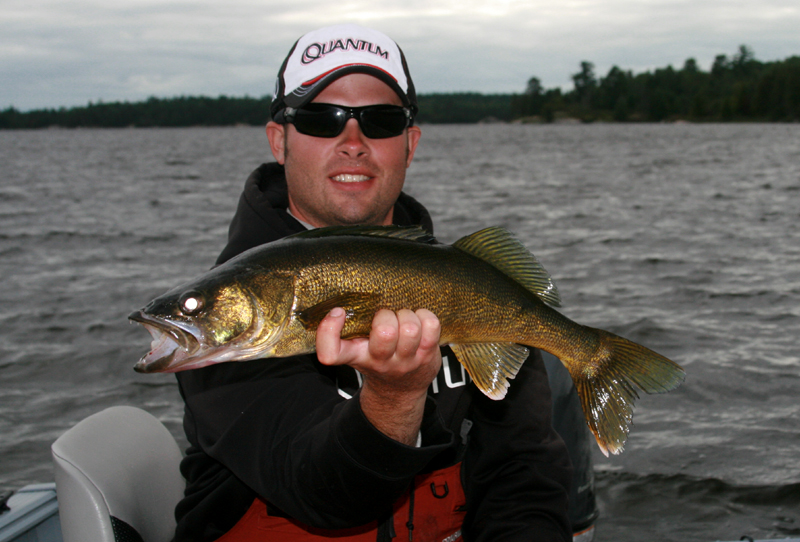
It wasn’t more than 15 years ago when the Rainy Lake walleye population was at an all-time low from over harvest and the abundant and invasive rainbow smelt populations. But due to the progressive management, the fishery has been revitalized, with many anglers catching and releasing fish between 26 to 32 inches annually. And did I mention that walleye shore lunches are easy to make?
If there was one certain fish species that perplexed us throughout the week, it was northern pike. According to some publications, Rainy Lake is rated as one of North America’s best destinations for big trophy pike due to its diverse habitat, abundant forage, and good growth rates. Although the fishery is world class, it seemed as if we had to catch 250 undersize snakes for each pike surpassing 36 inches or longer. For the week, the notable fish we boated was a pair of 34 and 36 inchers casting weedlines, and a 40 inch gator while single line trolling. Many of Pearson’s guests catch pike annually up to 45 inches, with even the occasional sighting of some special 50 inchers.
Despite the abundance of juvenile pike on every rock point, grass bed, and weedbed, Rainy Lake’s northern pike fishing is indeed some of the best in Northwest Ontario due to its slot size and mandatory catch and release of fish greater than 27.5 inches. In prime seasons such as spring and fall, anglers will catch nothing but big fish. However, Amato and I were the unlucky ones. Casting deep weedlines with topwaters, bucktails and crankbaits, single line trolling along rock walls, points and reefs with crankbaits and large minnow plugs, and fly fishing are effective ways to catch them.
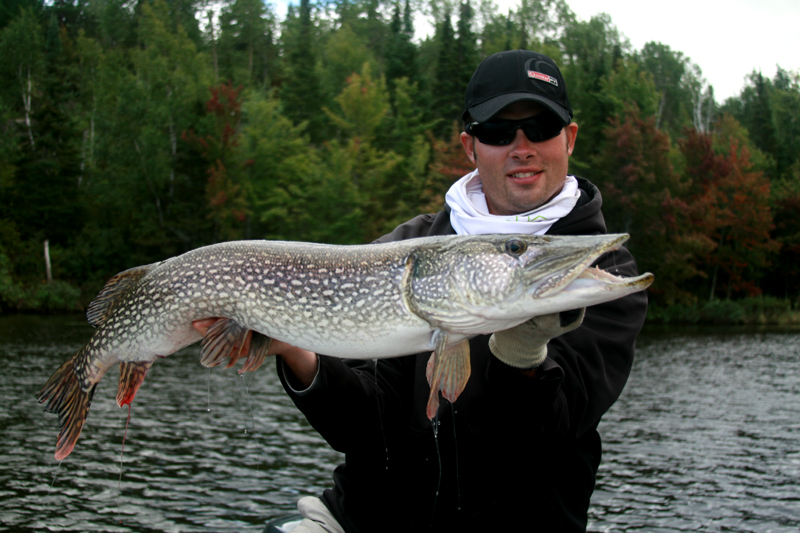
When gearing up for Rainy Lake, there is no need to overdo it with specialized tackle unless you are bringing your own boat, or have the storage space to contain it all. With its unique bass fishery and the best strategy being running and gunning and covering water, bringing a variety of search lures such as spinnerbaits, topwaters, swimbaits, crankbaits, and jerkbaits is best. With pike and walleyes occupying many of the same areas as smallmouths, bringing all-purpose rods and reels along with tackle is the best strategy to employ for targeting individual fish species, and then being able to fish multi-species at once. Additionally, thin wire or tieable titanium leaders are essential to avoid getting bitten off by the voracious, abundant pike. Lastly, keeping in mind the plethora of rock hazards and snags, don’t depend on jigs and other bottom oriented baits to catch fish unless you can afford donating gear to the lake. However, there are special times in which tube jigs and football heads may come handy.
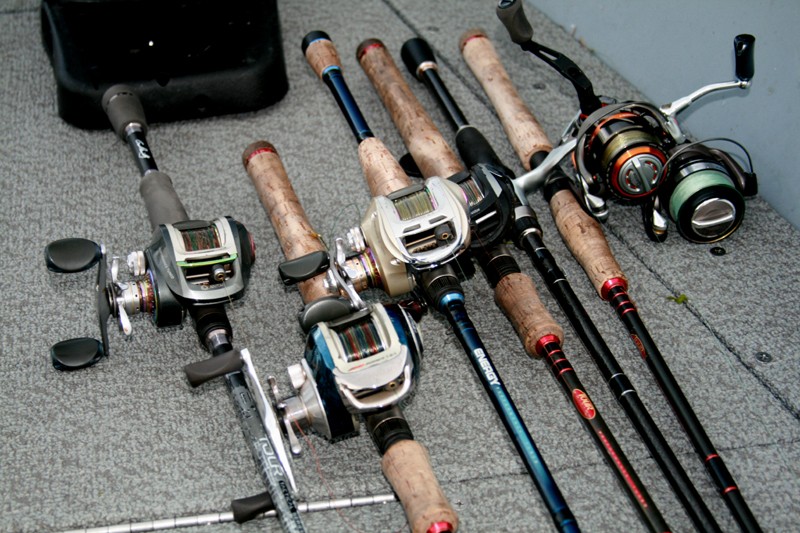
Cover and structure is everywhere on Rainy Lake. Bringing power and size with your rods, reels and lines is a must. Have a variety of reels spooled with 8, 10, 12, and 14lb size monofilaments and copolymers (Cortland Camouflage and Endurance). If fishing with braided superlines such as Cortland’s Masterbraid, 15 and 20 lb is perfect for walleyes and bass, and 50 lb or greater is best for big pike. There is no such thing as too big of a rod and reel, or too powerful of a line for the large fish prowling the depths of Rainy Lake.
The Fishery
Rainy Lake is one of North America’s top drive-to fishing destinations for multi-species angling and highly rated for smallmouth bass. As all of my serious bass fishing is predominantly centered on the Upper Midwest, Rainy Lake is one of the most interesting, unique fisheries I have ever been on, and certainly in my top-five places to visit. It’s not a painfully long trip to make for an entire week’s fishing: 4 hrs from Central MN, 3 hrs from Duluth, 5hrs from Northern WI, and 14 hrs from Chicago.
To ensure that Rainy Lake annually sustains its world-class fishery, Camp Narrows has a mandatory catch-and-release policy for its smallmouth bass. Rainy Lake also has slot-sizes to protect its trophy pike and walleye populations. These regulations encourage voluntary catch and release, and ensure that big fish will remain in the system (unless tribal netted) for future angling generations to come. The reason for big fish abundance is largely due to progressive management practices by Minnesota and Ontario’s Ministry of Natural Resources. With these policies, Rainy Lake will not only sustain its world-class fishery but it will get even better for future visitors.
For an incredible fishing getaway, I hope I’ve made this 2014 trip showcase compelling. Make Rainy Lake with Camp Narrows Lodge a destination for your annual Canadian fishing.
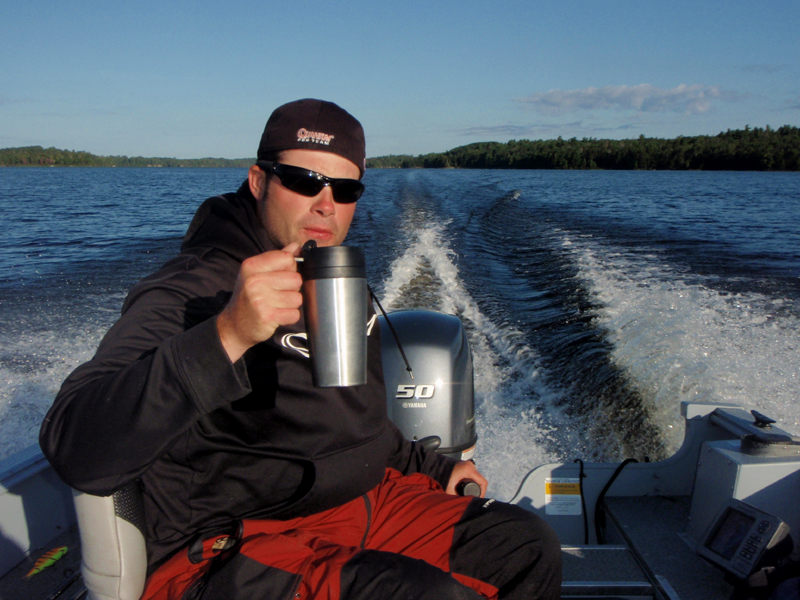
Camp Narrows Lodge offers you the opportunity to experience a unique outdoor fishing and hunting adventure at a boat-in resort. Enjoy the unbeatable combination of first-rate accommodations and excellent fishing and hunting. Contact Tom Pearson at fishing@campnarrows.com, or call toll free 1-866-294-5067. Visit online at www.campnarrows.com and www.ontariohunting.ca to book your next Northwest Ontario adventure.























